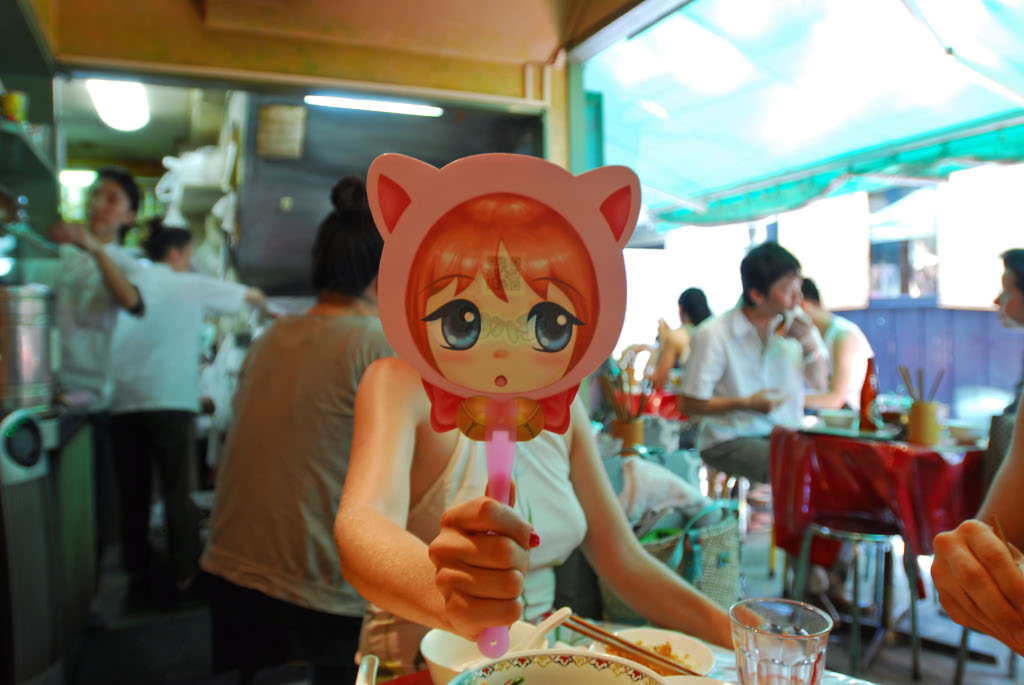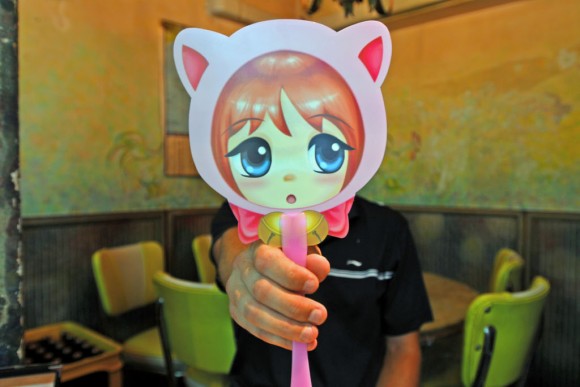Who are you? Or more to the point who do you want to be?
Over time, more of the the social cues for communicating when a photo is about to be taken have shifted from the photographer to photographer + camera – in this instance an infrared focus and accompanying beeps. The contexts in which the photographer or camera is socially/morally/legally obligated to notify by-standers that a photo is about to be taken. (Here in Japan camera phones need to include a loud shutter sound that cannot be switched off to avoid surreptitious camera-phone photography). How to communicate what is in-shot and what remains off-camera?
If you’ve got the Monday morning mind space and the caffeine is kicking in – replace every instance of camera with data/experience capturing device in its broadest and narrowest sense.
How the social norms change when your camera is able to draw on, embed and link to a huge amount of contextual information – anything from where you are, the data-collection rights in this context, who else is in proximity, their tax bracket or other personal data.
People like to manage and manipulate (with various degrees of success) how they are perceived by friend, peers, the authorities, members of the public, …. If you could change one thing about every photo that was taken of you what would it be? Now extrapolate to being able to change everything about you? Or why stop at you – what rights do you, the subject of the photo have over what appears around you? Automatic post-processing of images according to the preferences of each individual, the context, the manufacturer of the camera, the supplier of the ad-supported meta data.
And whilst you might be fine with a pearly smile or ironed out wrinkle, other’s will want wholesale change – their Wii or World of Warcraft or … avatars shaking loose from their digital constraints. But what happens when Moleitau wants to be Moleitau everywhere and everywhen, a lifetime’s worth of photos online updated at a whim? Which brings us to the heart of the matter – when every photo is connected, sufficiently identifiable it moves from being a absolute, static entity to being relative and dynamic. Today the digital camera can ‘lock’ photos to avoid accidentally deleting them. With practically unlimited storage space this evolves into a version number lock – the photographer (or other stakeholders) preference for how the photo was meant to be, and instructions for how it is treated in its post-processing after-life. A moment first captured in time, then suspended in time. Or to be more accurate – suspended in version.
Which brings us to the rub – that this applies to everything you see and hear, it’s your reality. For every person who wants their online identity to be wrinkle free, there’s another person that prefers to think of you with dripping vampire fangs, and we all get what we want right? Well, that depends. If you have the money, the nous, your’e be in a better position to extend control over other people’s digital. Hmm, which companies with reach in the online space will in a position to affect this?
The coffee is really kicking in, time to bike to work through a let up in the Tokyo rain. A fractured week coming up – bank holiday Tuesday, LA Thursday. Looking forward to face time with the team.

